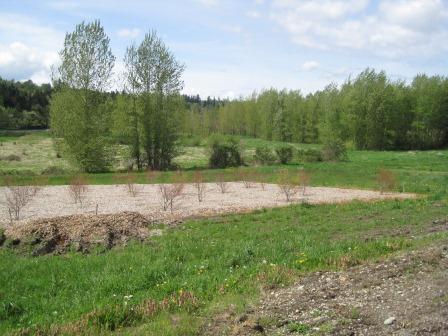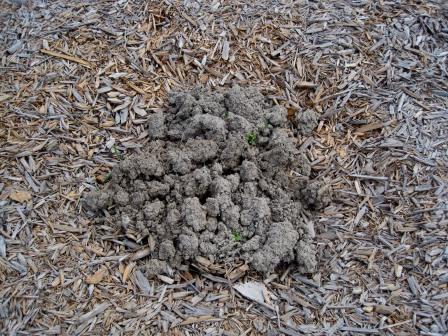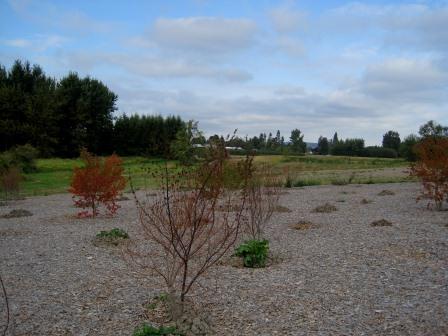Three weekends ago marked a milestone of sorts as mean daily CO2 levels at the National Oceanic and Atmospheric Administration observatory at Mauna Loa, Hawaii topped 400 ppm for the first time ever. Rising levels of CO2 and other greenhouse gases could result in significant increases in temperature in the Upper Midwest over the next century. When we think about trees in cities the scenario is even worse since not only will urban trees have to deal with overall temperature increases but they must also contend with urban heat island effects, which can add another 8 deg. C or more of heat load. Because of this ‘one-two punch’ of global climate change and urban heat island effect, I often refer to urban trees as the proverbial ‘canary in the coal mine’ with respect to climate change since they will likely be impacted sooner and more dramatically than trees in woodlands.

In general, organisms have three options to deal with a change in their environment: They can migrate, they can adapt, or they can acclimate. Since trees are sessile organisms, they can’t pick up and move so migration is out. Current predictions are that climate will change faster than trees can evolve so natural selection and adaptation will be limited. Which leaves us with acclimation, or the ability of a tree to adjust its physiology and morphology to its environment. A common example of an acclimation response is the development of sun and shade leaves on the same tree. Another example of an acclimation response is an increase in the optimum temperature for photosynthesis in response to exposure to increasing temperatures. In theory, trees that have a greater capacity to adjust their physiology to increasing temperature will be better suited for future, presumably warmer climates.
We are currently testing this idea in a two-part study. In part one we are growing trees from several shade tree cultivars in greenhouses under three temperature regimes; ambient temperature, ambient + 5 deg. C, and ambient +10 deg. C. In part two of the project we planted trees of the same cultivars in two sites in Detroit in cooperation with the Greening of Detroit. The Greening of Detroit is community based non-profit organization that assists neighborhood groups, churches and schools in their efforts to improve the ecosystem in Detroit through tree planting projects, environmental education, urban agriculture, open space reclamation, vacant land management, and workforce development programs.

Many hands make light work. Greening of Detroit volunteers plant trees along a street median.
With the help of Greening staff and about 90 Greening volunteers, we recently planted 160 shade trees in downtown Detroit. One site of the study is in a park, representing a relatively mild micro-climate; while the other site is along a street median surrounding by asphalt with a much higher reflected heat load. Both sites with be instrumented with environmental sensors and we will compare growth over time as well as physiological responses such as the response of photosynthesis to temperature. The long-term goal is to identify traits that will be most important to guide future selections of trees of urban and community forestry under changing climatic conditions.
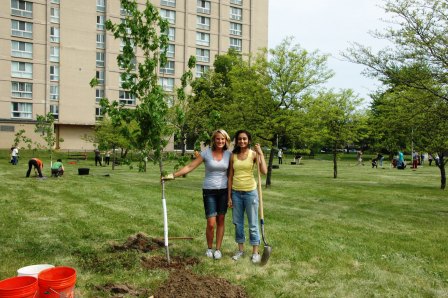
Research Technician Dana Ellison (left) and Research Aide Aiman Shahpurwala finish planting a park tree.
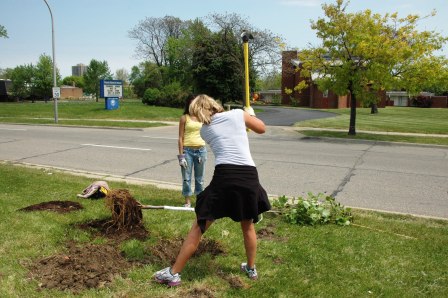
A pick ax as a planting tool? Dana shows how it’s done in Detroit.
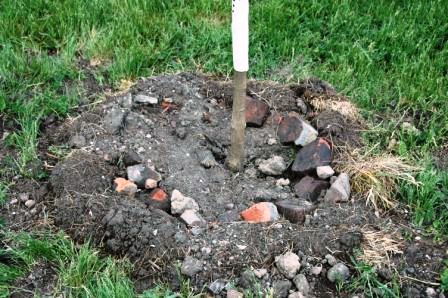
Should back-fill be amended? My usual answer is ‘no’, but then again it depends what your back-fill looks like…

Sizing things up. Aiman and Dana collect initial data on trees after planting.
